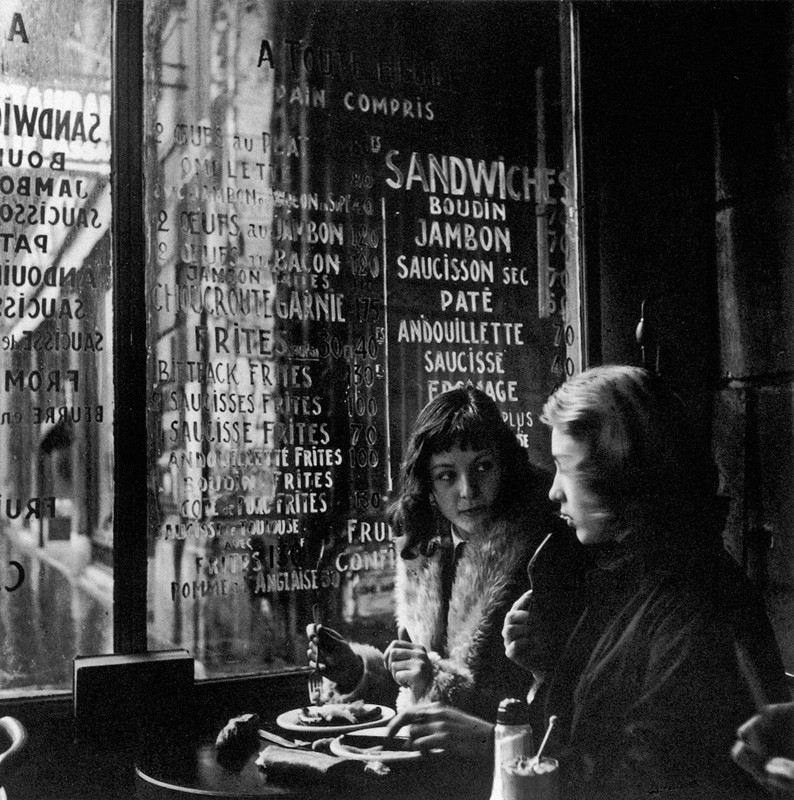La Ripaille
605 Hudson St.
New York, NY 10014
(212) 255-4406
There is never any ending to Paris and the memory of each person who has lived in it differs from that of any other. We always returned to it no matter who we were or how it was changed or with what difficulties, or ease, it could be reached. Paris was always worth it and you received return for whatever you brought to it. But this is how Paris was in the early days when we were very poor and very happy.
Ernest Hemingway, A Moveable Feast
La Ripaille is a 16th-century French word that means a feast or revelry. La Ripaille is one of the oldest restaurants in the West Village. Its regulars have been eating at the bistro for 25 years. In the spirit of the authentic bistro, the owner, Alain Laurent, manages the day-to-day operations of the restaurant. He visits the markets to find the freshest produce and creates dishes based upon seasonality, locality and quality. He curates the wine list and is even known to cook when the chef needs a break! Mr. Laurent comes from a restaurant family: both his brother and sister own restaurants in New York and his nephew owns one in France.
I was alone, cold and poor in Paris. I would walk, explore bookstores and map shops and bakeries. I would take black and white photographs of the Seine and the bridges and the barges with my small camera. In a modest bistro I would sip a single glass of wine all day and read Joyce and write poems that I later tossed one by one into the fire in the foyer of the hostel next to the frozen fountains of the Luxembourg Gardens. I was happy living in Paris. La Ripaille reminds me of my Hemingway days: very poor and very happy.
We arrived for early dinner and we were greeted and seated by Mr. Laurent himself. He described the daily specials to us, and brought us our dishes. He was charming and energetic.
My wife had been shopping in the holiday markets all day and was happy to be seated in a quiet, warm bistro and to be served a glass of wine after the crowds, the cold and crush of Christmas in New York.
The menu has the standards and the prices are reasonable. Most of the mains are from $21 to $25.
La Ripaille is modest from the street. There is a small bar to the left. The heavy red curtains make the bistro feel theatrical. A silent grandfather clock made in 1846 is set to the opening time of the restaurant. On the red brick walls next to the clock hang old iron forks and spoons. There are French posters, rows of glasses hanging over the bar, wood chairs and tables, candles and flowers. There is a terrace for the summer and a fireplace in the back for the winter. There are many signifiers of the bistro Archetype.
This poster over my table: Fap’Anis. Celui des Connaisseurs. This poster was a 1920s French advertisement for a pastis aperitif called Fap Anis. The creation of pastis (an anise flavored spirit) was in response to the banning of absinthe in France in 1915.
The flapper enjoying a panoramic vista of the French Riviera was Gaby Deslys. She was from Marseille and was a dancer, singer, and actress. During the 1910s she had worldwide fame and performed in Paris, London and New York. She made $4,000 a week in the United States alone. During the 1910s she performed several times on Broadway. Her dancing was so popular that The Gaby Glide was named for her. Renowned for her beauty, she was courted by wealthy gentlemen including King Manuel II of Portugal. Gaby loved pearls and claimed that she owned a collection equal to her own weight.
Marseille, the home of pastis, and where Fap Anis was produced, made Gaby a natural fit for this advertisement.
We ordered pommes frites, mussels and a filet of bass sauteed in Champagne and rosemary. Each dish was simply prepared and presented. The flavors and textures were clearly articulated and flavorful. The fish was perfectly cooked. Even the bread was enjoyable. Our wines by the glass were modest but so was the pricing.
The only false note in the evening was the tarte tatin. In my review of Cherche Midi I wrote extensively on the tarte tatin. Here is the link:
http://www.newyorkbistros.net/?p=154
Julia Child describes a tarte tatin as:
It is caramelized sliced apples, oven-baked in a skillet with the pastry on top; when done, it is turned upside-down so the crust is on the bottom and the apple slices – wonderfully brown, buttery, and glazed with caramel – remain in a design on top.
This tarte tatin failed. The crust was soggy, the apples were overcooked, and the whole affair lacked flavor and structure.
At La Ripaille we found good food, prepared with care and pride, the owner working the front, and a delightful experience in this classic bistro in the West Village. Love on the Left Bank, A Moveable Feast, Tropic of Cancer.
Ratings
Archetype-9
Most of the signifiers of the bistro Archetype, even the rarity of the owner working the front of the bistro. Grandfather clocks, 1920’s French posters, and small bar)
Food-8
Well executed; bistro standards with few innovations. The tarte tatin failed.
Staff-8
Service that only the owner can provide: friendly, professional, authentic.
Energy-8
Small, cozy, historical, West Village bistro. A neighborhood place. Quiet and romantic, you feel good to be here.
Resources
Reviews
http://nymag.com/listings/restaurant/la-ripaille/
http://www.gayot.com/restaurants/la-ripaille-new-york-ny-10014_1ny99177.html
http://events.nytimes.com/mem/nycreview.html?res=9C03E5D81639F932A35754C0A965948260
Tarte Tatin
http://www.tartetatin.org/home/history-of-the-tarte-tatin
http://www.theguardian.com/lifeandstyle/wordofmouth/2011/oct/20/how-to-cook-perfect-tarte-tatin
